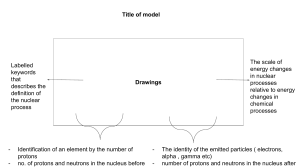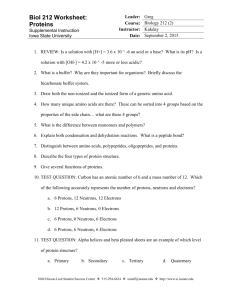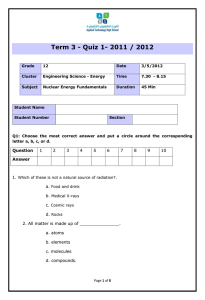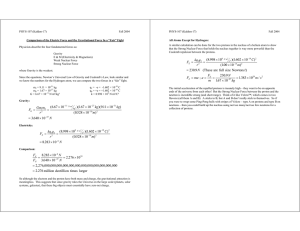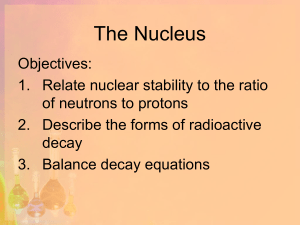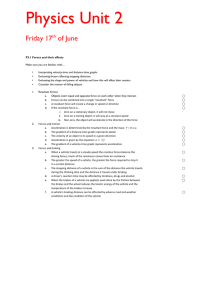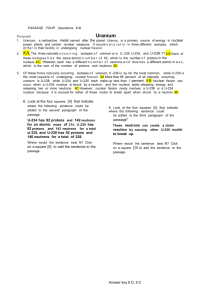CHEM 2124 General Chemistry II Extra Credit Challenge Problem
advertisement
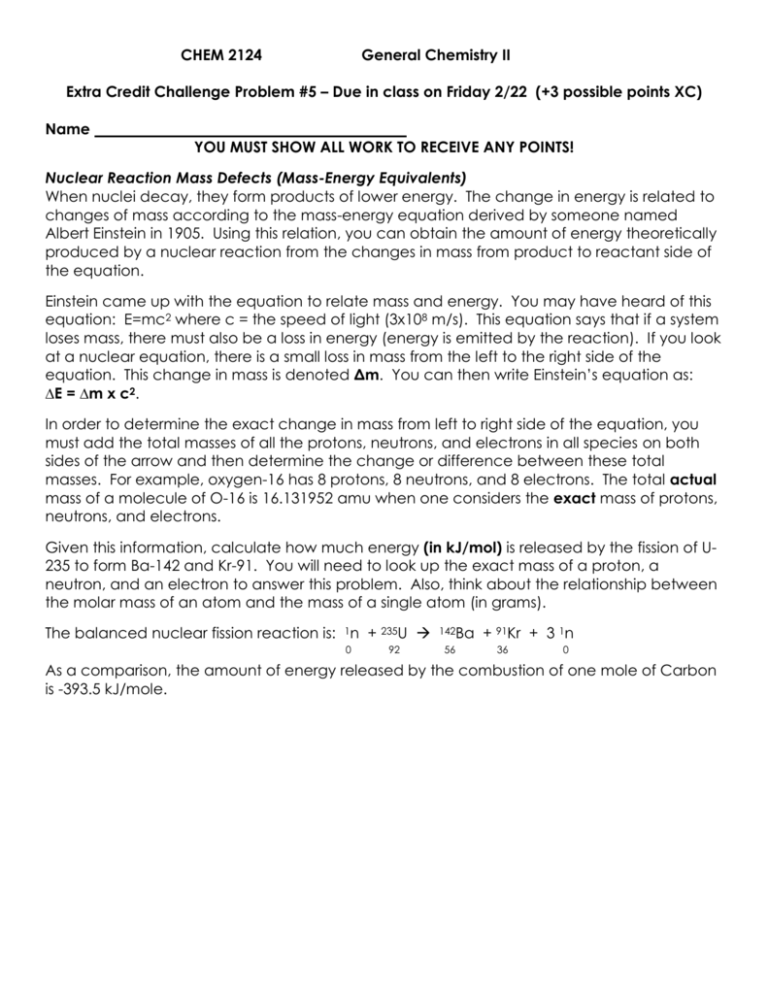
CHEM 2124 General Chemistry II Extra Credit Challenge Problem #5 – Due in class on Friday 2/22 (+3 possible points XC) Name YOU MUST SHOW ALL WORK TO RECEIVE ANY POINTS! Nuclear Reaction Mass Defects (Mass-Energy Equivalents) When nuclei decay, they form products of lower energy. The change in energy is related to changes of mass according to the mass-energy equation derived by someone named Albert Einstein in 1905. Using this relation, you can obtain the amount of energy theoretically produced by a nuclear reaction from the changes in mass from product to reactant side of the equation. Einstein came up with the equation to relate mass and energy. You may have heard of this equation: E=mc2 where c = the speed of light (3x108 m/s). This equation says that if a system loses mass, there must also be a loss in energy (energy is emitted by the reaction). If you look at a nuclear equation, there is a small loss in mass from the left to the right side of the equation. This change in mass is denoted Δm. You can then write Einstein’s equation as: ∆E = ∆m x c2. In order to determine the exact change in mass from left to right side of the equation, you must add the total masses of all the protons, neutrons, and electrons in all species on both sides of the arrow and then determine the change or difference between these total masses. For example, oxygen-16 has 8 protons, 8 neutrons, and 8 electrons. The total actual mass of a molecule of O-16 is 16.131952 amu when one considers the exact mass of protons, neutrons, and electrons. Given this information, calculate how much energy (in kJ/mol) is released by the fission of U235 to form Ba-142 and Kr-91. You will need to look up the exact mass of a proton, a neutron, and an electron to answer this problem. Also, think about the relationship between the molar mass of an atom and the mass of a single atom (in grams). The balanced nuclear fission reaction is: 1n + 235U 0 92 142Ba 56 + 91Kr + 3 1n 36 0 As a comparison, the amount of energy released by the combustion of one mole of Carbon is -393.5 kJ/mole.
